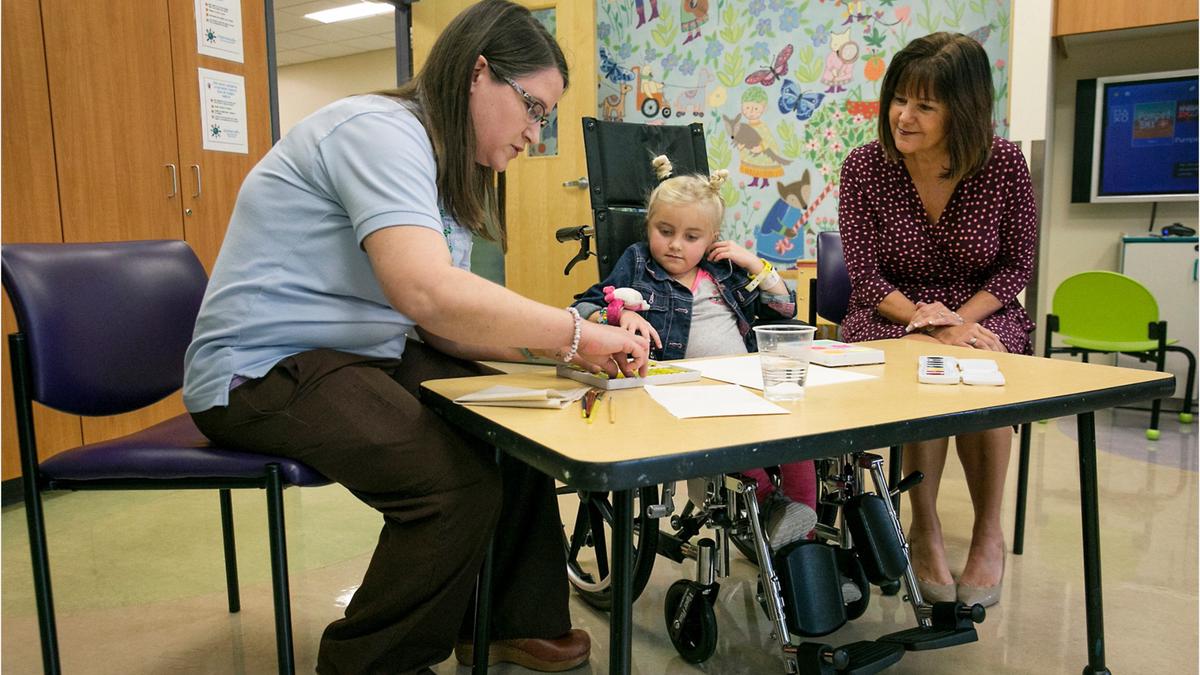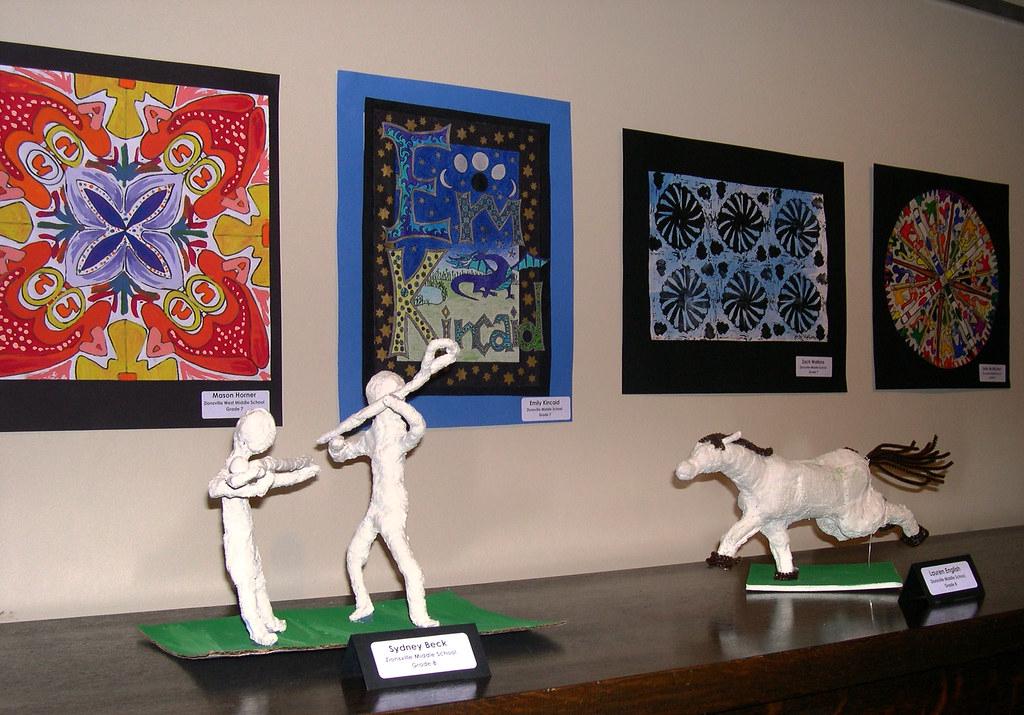Defining Art Therapy in Education
Art therapy in education combines creative expression with psychological support to enhance emotional, social, and cognitive growth in students. This approach uses art-making processes like painting, drawing, and sculpting to help students express feelings and thoughts that might be difficult to verbalize.
Consider a child feeling overwhelmed but struggling to talk about it. They might create a drawing that represents their feelings, providing a starting point for understanding and discussing their internal state. Art therapy also bolsters cognitive functions. When students engage in creating art, they're honing skills like problem-solving and sequential thinking.
In terms of social development, collaborative art projects can be transformative. These activities encourage students to work together, fostering communication and teamwork. Through shared creative endeavors, students learn to listen to one another, consider different perspectives, and build a sense of community.
Applying psychological principles in these activities is essential. For example, painting within a bordered space helps students feel contained and safe, much like how structure in our lives helps us manage chaos. Different techniques, such as visualization, can help students focus on specific emotions or concepts, aiding in their emotional regulation.
In educational settings, art therapy is integrated into the fabric of learning and development. Art therapists collaborate with teachers and school staff, aligning art therapy sessions with educational goals and individual student needs. Their expertise makes art therapy a unique component in promoting emotional resilience, academic achievement, and social harmony within the school environment.

Historical Background of Art Therapy in Education
The roots of art therapy in education trace back to the early 20th century. By the mid-20th century, Margaret Naumburg and Edith Kramer built a framework for integrating art into therapeutic practices.
Naumburg, often called the mother of art therapy, drew on psychoanalytic theories. She believed that the creative process mirrored the unconscious mind, allowing for the externalization of internal conflicts. Kramer saw the artistic process itself as inherently therapeutic, focusing more on the journey rather than the finished product.
The 1980s and 1990s witnessed a surge in the incorporation of art therapy programs within schools. Educators began to realize that fostering emotional and psychological health was as crucial as academic achievement. Professional bodies like the American Art Therapy Association (AATA) standardized training and practices, while universities began offering specialized programs in art therapy.
Schools quickly saw the benefits. Students who couldn't quite fit into traditional learning thrived, finding a new form of expression without the stigma often associated with verbal therapy. As more success stories emerged, art therapy initiatives grew from experimental programs into integral parts of school curriculums.
Today, art therapists enter schools with a blend of creative and therapeutic strategies, standing on the shoulders of those early pioneers. Their efforts have paved the way for a more holistic approach to education, one that celebrates the myriad ways students can express themselves, manage their emotions, and thrive academically and socially.
Importance of Art Therapy in Schools
Art therapy holds critical importance in schools. It provides a non-verbal outlet for students to express complex feelings they might struggle to articulate. Through art, students can find relief and develop emotional regulation strategies.
Academically, art therapy sharpens skills like problem-solving, critical thinking, and planning. These skills can boost performance in other subjects. It's like sneaking vegetables into a kid's favorite dish—students develop academically without even realizing it.
In group settings, art therapy becomes a social crucible, forging bonds and teaching invaluable social skills. Collaborative projects require communication, task division, and respect for others' artistic choices. Through these shared creative endeavors, students learn empathy, cooperation, and conflict resolution.
Art therapy also helps in reducing instances of bullying and social isolation. The act of creating together fosters an environment of mutual respect and understanding. A student who feels like an outsider can gain confidence and a sense of belonging through their artistic contributions.
By integrating art therapy into school curriculums, educational institutions are nurturing well-adjusted, emotionally sophisticated individuals who can handle the ups and downs of life. It's schooling that goes beyond textbooks, touching the very core of what it means to be human.
Key Techniques Used in Art Therapy
Art therapists employ various techniques to unlock a child's mind and emotions. Each medium offers unique benefits and insights.
- Drawing facilitates the expression of complex feelings. A child grappling with anger might aggressively scribble across a page, embodying their inner turmoil. As the drawing progresses, it often mirrors the calming of their inner storm.
- Painting adds the dimension of color. A child feeling sad might lean towards blues and grays, while a joyful child might use yellows and reds. Beyond interpreting colors, painting encourages freedom and experimentation. It's a hands-on way of learning that mistakes are just part of the creative process.
- Collage-making involves arranging cut-out pictures, words, and symbols on a canvas. It's like piecing together a puzzle of their inner world. Each selected fragment represents an aspect of their life or emotions, revealing much about their priorities and conflicts.
- Sculpting and working with clay emphasize the tactile and three-dimensional aspect of art therapy. The physical act of molding clay—pressing, kneading, and shaping—acts as a form of kinetic release, aiding in emotional regulation.
- Art journaling combines writing and drawing. Students document their thoughts, emotions, and experiences, creating a safe space where they can juxtapose written words with sketches or watercolor splashes.
Each technique taps into different cognitive and emotional faculties. They provide a window into a child's inner world, helping to decipher the complex landscape of their thoughts and feelings. Through these processes, children not only express their emotions but also develop coping mechanisms, enhance their cognitive skills, and build resilience.

The Role of Art Therapists in Schools
Art therapists in schools blend creative flair with therapeutic expertise to support students' mental health, emotional resilience, and cognitive development. They assess needs, develop personalized treatment plans, and provide a safe space for expression.
These professionals lead both individual and group sessions. One-on-one, they help students explore feelings through art. In groups, they facilitate projects that foster empathy, cooperation, and conflict resolution.
Collaboration is key. Art therapists work with teachers, counselors, and administrators to integrate therapy into the curriculum. They often serve as a bridge between educators and parents, offering unique insights into a child's emotional state and progress.
Becoming an art therapist requires substantial education and experience. Typically, they hold a master's degree in art therapy or a related field, complete extensive supervised clinical practice, and pursue professional certifications.
The impact of art therapists in schools can be significant. By providing non-verbal outlets for expression, they facilitate deeper understanding of students' inner worlds, potentially improving behavior, academic performance, and overall well-being.
Implementation Strategies for Art Therapy
Integrating art therapy into schools requires thoughtful planning and collaboration. Key strategies include:
- Partnering with educators: Regular meetings help align art therapy with educational objectives.
- Creating dedicated spaces: Design calming, well-equipped areas that encourage creativity and emotional expression.
- Thoughtful scheduling: Weave art therapy into the regular timetable to complement academic activities.
- Embedding therapy in curriculum themes: Connect art therapy sessions to broader educational topics for deeper learning.
- Scaling through teacher training: Equip teachers with basic art therapy techniques to use in daily lessons.
- Documentation and reflection: Keep detailed records to measure progress and adjust strategies.
- Involving parents: Host information sessions and workshops to build a supportive community.
Successful implementation involves ongoing dialogue, flexibility, and creativity to ensure every student benefits from this holistic approach to education.
Challenges Facing Art Therapy Implementation
Despite its potential benefits, implementing art therapy in schools faces several hurdles:
- Lack of awareness: Many educators and administrators misunderstand art therapy's purpose and benefits.
- Insufficient funding: Tight budgets make it difficult to allocate resources for art therapy programs.
- Shortage of trained therapists: The demand for art therapists often exceeds the supply.
- Disruption of existing structures: Integrating art therapy can unsettle established routines.
- Difficulty measuring outcomes: The qualitative nature of art therapy benefits can make them hard to quantify.
To address these challenges, schools and art therapists can:
- Educate stakeholders through workshops and case studies
- Seek external funding sources like grants and community partnerships
- Promote art therapy as a career and expand training programs
- Develop flexible integration approaches
- Create robust assessment tools to capture progress
While implementing art therapy in schools is challenging, the potential benefits for students' emotional well-being and overall development make it a worthy endeavor.

Case Studies of Successful Art Therapy Programs
Let's explore some successful art therapy programs in educational settings, showcasing how creative expression can be a potent tool for emotional and cognitive development.
The Larkspur School in California helps students with emotional and behavioral difficulties. Individualized sessions create a safe space where students can express their inner worlds. For example, a child might sculpt a figure representing their anxiety, processing complex feelings with guidance from a trained art therapist. The results include reduced emotional outbursts, improved classroom behavior, and enhanced academic performance.
The University of Georgia partners with local schools to provide art therapy services to children who have faced trauma. When students create a series of drawings detailing their journey from trauma to recovery, they're building resilience and gaining emotional tools that will serve them well beyond their school years.
In Connecticut, the Head Start program's art therapy initiative for preschoolers fosters cognitive and emotional development while addressing behavioral challenges. A four-year-old with a history of tantrums might channel their energy into painting, each brushstroke a step towards emotional regulation. The visible shift from disruptive behaviors to focused engagement demonstrates the transformative power of art therapy.
Common elements contributing to these programs' success include:
- Individualized and group sessions catering to each child's unique emotional needs
- Integration of art therapy into the school's broader educational framework
- Collaboration between art therapists, school counselors, teachers, and family members
These examples show that art therapy in schools isn't just a series of creative exercises; it's an essential intervention that transforms lives. Through drawing, painting, sculpting, and other artistic endeavors, students learn to articulate their experiences, process their emotions, and build resilience.
By placing art therapy at the heart of their educational approach, schools are nurturing well-rounded, emotionally intelligent individuals ready to face the world.

Art therapy in education goes beyond creating art; it's about fostering emotional resilience, cognitive growth, and social harmony. By incorporating creative expression into the school environment, we can help students handle their emotions and enhance their overall well-being. This approach supports academic achievement and the development of well-rounded, emotionally intelligent individuals.

























